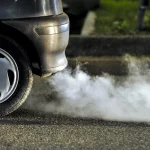Motorcycle enthusiasts and DIY mechanics know that the smooth performance of their machines often hinges on the tiniest components. One such crucial component is the pilot jet in your carburetor. Often overlooked, a clogged pilot jet can cause all sorts of headaches – from rough idling to poor acceleration and more. Understanding the signs of a clogged pilot jet is vital for maintaining the health and performance of your vehicle. In this article, we’ll dive into the symptoms of a clogged pilot jet and the telltale signs you need to watch out for. If you’ve ever wondered why your engine isn’t running quite right, keep reading – the answer may be smaller than you think.
Contents
Key Takeaways:
- The pilot jet, part of the carburetor, regulates fuel when the engine is at idle or low speeds.
- Stale fuel or debris can lead to clogging in the pilot jet, affecting engine performance.
- Symptoms of a clogged pilot jet include hard starting, unstable idling, and poor throttle response.
- Cleaning a clogged pilot jet involves disassembling the carburetor, cleaning the jet, and reassembling the carburetor.
- Regular maintenance, using fresh fuel, and installing a fuel filter can help prevent pilot jet clogs.
- Understanding the pilot jet’s role and maintaining it can greatly enhance your vehicle’s performance and reliability.
Role of Carburetor
A carburetor is the heart of your vehicle’s fuel system. It is responsible for mixing the right amount of gasoline with air, creating a combustible mixture that powers the engine. The components of a carburetor are intricately linked, and if one part suffers, the entire system can be compromised. A critical piece of this puzzle is the pilot jet, which plays a significant role in ensuring your engine operates efficiently.
The Crucial Role of a Pilot Jet
Tucked within the complex layout of the carburetor, the pilot jet plays a vital role. Often called the idle or slow jet, it carefully controls the fuel supply when the throttle is barely open. It’s like a watchful gatekeeper, managing fuel delivery when your engine is idling or running at slow speeds. Though it may seem like your engine is barely working, the pilot jet is busy ensuring that even the smallest needs are met efficiently.
What is Clogging in Pilot Jets
The Causes of Pilot Jet Clogging
With time, like all mechanical parts, the pilot jet can encounter issues. The most common complaint with pilot jets revolves around clogging. Picture this: you’re at a busy street festival. There’s a crowd of people jostling, bustling, and trying to make their way through a narrow alley. It’s chaotic and movement is slow — almost impossible. This situation mirrors what happens when a pilot jet clogs.
But what’s causing this jam? Clogs in the pilot jet usually originate from stale fuel or unwelcome debris, such as dirt or dust particles. These contaminants, over a period, make a cozy home inside the jet, impeding the smooth flow of fuel, which consequently compromises your engine’s performance.
The Impacts of a Clogged Pilot Jet
Imagine if you’re trying to breathe, but there’s something blocking your windpipe. You’ll gasp, you’ll wheeze, and it will be hard for you to carry out even the simplest tasks. Similarly, a clogged pilot jet can cause a significant toll on your engine’s operation. From hard starts to irregular idling, a clogged pilot jet could lead to a litany of issues that make your ride not just unreliable, but potentially hazardous.
So how can you identify if your pilot jet is singing the blues because of a clog?
Symptoms and Telltale Signs of Pilot Jet Clogging
Trouble Starting the Engine
One of the earliest and most noticeable symptoms of a clogged pilot jet is trouble with starting the engine. A healthy pilot jet ensures a seamless start by regulating just the right amount of fuel at idle. But, if there’s a clog, the pilot jet is impeded from delivering the required fuel, causing the engine to stutter, struggle, or even fail to start.
Unstable Idle
Another telltale sign is unstable idling. If your vehicle seems to have a mind of its own, idling erratically, revving up, and down, the culprit might be a clogged pilot jet. This instability arises because the engine is not receiving the precise quantity of fuel it needs to maintain a steady rhythm. The result? A sputtering engine that seems more like an overexcited drummer in a rock band than a calm and composed symphony conductor.
Poor Throttle Response
A clogged pilot jet can also lead to a disconcerting delay or hesitation when you twist the throttle. Especially noticeable when you’re trying to speed up from a stop or low speeds, poor throttle response could mean your pilot jet is crying out for help.
Diagnosis of a Clogged Pilot Jet
So, you’ve noticed one or more of these symptoms and have a hunch that a clogged pilot jet is to blame. What next? The immediate step is to diagnose the issue. This procedure usually involves a meticulous inspection and testing of the carburetor, which includes checking the pilot jet for visible signs of obstruction or clogs.
Pro Tip: When cleaning your pilot jet, make sure to use a high-quality carburetor cleaner and the appropriate jet cleaning tools. Avoid using sharp or abrasive materials to clean the jet hole, as they can cause damage or alter its precise size, affecting fuel flow. Remember, the goal is to clear the passage, not widen or distort it. Regularly cleaning your pilot jet not only keeps it functioning optimally but also extends the life of your vehicle’s engine. It’s a small investment of time for a significant return on performance and longevity!
How To Clean Clogged Carburetor Jets – Video Guide
The Process of Cleaning a Clogged Pilot Jet
Disassembling the Carburetor
Once you confirm that your suspicion was indeed correct, and the pilot jet is clogged, it’s time to don your mechanic hat and clean it. The first stage involves disassembling the carburetor. This task requires delicacy and caution, as each part needs to be kept secure for reassembly.
Cleaning the Pilot Jet
With the carburetor disassembled, you can now focus on the beleaguered pilot jet. Employ a jet cleaning tool or a specialized carburetor cleaner to expel any residues or blockages from the jet. Ensure that the tiny hole through which the fuel flows is thoroughly clean and clear.
Reassembling the Carburetor
Post the cleaning, reassemble the carburetor with care, ensuring every component finds its way back home correctly. It’s like piecing together a jigsaw puzzle, where every piece holds value. Once done, it’s time for a test drive to confirm that the earlier symptoms have disappeared and your vehicle is back to its smooth self.
Prevention and Maintenance Tips for Pilot Jet
Prevention, as they say, is better than cure. Maintaining a clean pilot jet helps ward off potential clogs. This process includes using fresh, high-quality fuel, regularly inspecting and cleaning the carburetor, and fitting a fuel filter to trap any debris before it can infiltrate the carburetor.
More From Newsgear:
- The 10 Best 500cc Motorcycles
- Rusi Classic 250
- Yamaha XSR 155 Price In USA
- Kawasaki ZX-25r Price USA
- Yamaha Xmax 300
FAQs
How do you unclog a pilot jet?
To unclog a pilot jet, you need to take the carburetor off the engine and pull it apart. This will expose the pilot jet. Then, use a carburetor cleaner and a thin wire to remove any blockages. Rinse it with compressed air to clear out any remaining debris.
How do I know if my carb jet is clogged?
Signs of a clogged carb jet include an engine that’s hard to start, poor performance at low speeds, and an engine that stalls or runs rough when idle. If the engine runs better when the choke is on, it’s likely a sign of a clogged carb jet.
How do I know if my pilot jet is too rich?
If your pilot jet is too rich, your engine might be hard to start and might display a poor idle. If you notice black smoke from the exhaust or if the spark plugs are fouled, these are signs that the mixture might be too rich.
Will seafoam clean clogged pilot jet?
Yes, Seafoam is a cleaning agent that can help clean a clogged pilot jet. When added to the fuel, it cleans the fuel system and removes carbon deposits, which can help unclog the jet.
How do you clean a pilot jet without removing the carburetor?
It’s hard to clean a pilot jet thoroughly without removing the carburetor. However, using fuel additives like carburetor cleaner can help. They clean as the engine runs, but may not be as effective as a manual clean.
What do you soak a pilot jet in?
You can soak a pilot jet in a carburetor cleaner. This will help to dissolve any varnish or gunk that’s causing the clog. After soaking, rinse it with compressed air to remove any remaining debris.
How often should I clean the pilot jet?
The frequency of cleaning your pilot jet depends on several factors, such as the nature of your usage, quality of fuel, and overall maintenance of your vehicle. As a general guideline, checking and cleaning every few months can avert serious complications.
What causes pilot jet clogging?
The usual culprits behind pilot jet clogging are stale fuel, dirt, and other debris. Over time, these contaminants accumulate in the jet, causing an obstruction in fuel flow.
What other components of my carburetor should I keep an eye on?
Apart from the pilot jet, you should regularly monitor the condition of other key components such as the main jet, needle valve, and float bowl. Regular maintenance of these parts can help maintain the optimal performance of your carburetor.
Can I clean a clogged pilot jet myself?
Absolutely! If you’re comfortable with disassembling and reassembling your carburetor, you can indeed clean a clogged pilot jet yourself. All you need are the right tools and a bit of patience.
Conclusion
To wrap it up, tackling a clogged pilot jet might appear intimidating at first, but it’s truly manageable. Equipping yourself with the right knowledge can turn this complex task into a routine one. Recognizing the signs, diagnosing the problem, and taking appropriate actions are the key steps.
Keeping your pilot jet clear of obstructions is pivotal for your vehicle’s superior performance and reliability. In doing so, you’ll not only ensure smooth rides but also achieve peace of mind. Isn’t it empowering to know that you can maintain your vehicle’s health and enjoy hassle-free journeys? That’s the power of understanding and maintaining your pilot jet.
Kamran Hussain is a motorcycle enthusiast and expert with over 5 years of experience in the industry. As a seasoned rider, he has a deep understanding of the motorcycle market and is dedicated to helping riders find the best bikes and gear to suit their needs.
Kamran Hussain has written extensively on motorcycle topics, including buying guides, product reviews, and maintenance tips. With his comprehensive knowledge of the industry, he is a trusted source for motorcycle enthusiasts seeking reliable information and advice.






